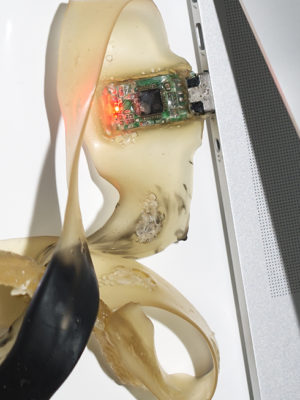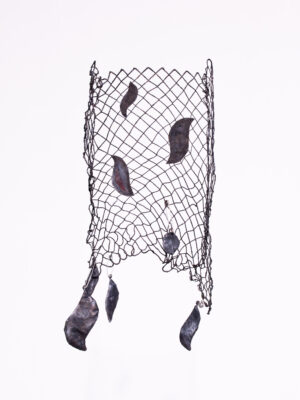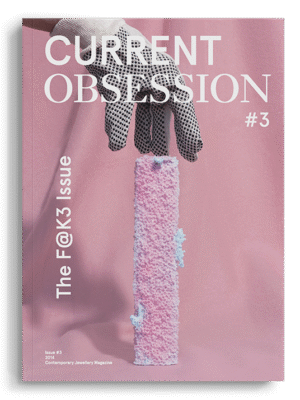CURRENT OBSESSION
With use 2 b usb you address/investigate the relationship between the digital and the material. Can you talk about that? ___STEADY_PAYWALL___
Rebecca Stephany
At first glance, ‘digital’ and ‘material’ evoke images that seem to be asynchronous, mutually excluding each other. Digital data is immaterial in its nature and can only be activated or made visible through a medium. use 2 b usb is both, a series of multiples commissioned by RongWrong and an immaterial group show of forty something original art works – each piece contains a unique digital contribution.
In its programming and day-to-day affairs, RongWrong insists on organic relationships. The edition picks up on this emphasis on friendship in the sense that I approached it as a collaborative project, activating my own network of befriended artists and designers who prioritise sustainable and authentic contacts, too.
I invited a number of female artists, designers, writers and curators that I have crossed paths with in the past ten or so years of studying, residencing, teaching, exhibiting, professionalizing and internationalizing as a female artist and designer to contribute a digital work or compilation of materials to one USB piece each. My only prompt was the idea of an anonymous surprise that would intrude the buyer’s personal computed space, pointing at the tension between the haptic material surface of the USB necklaces and the immaterial content of the individual contributions.
Concepts such as the digital/the material, the original/
the version, the individual/the collective, the art object/
the piece of jewellery, are merged and juxtaposed, their boundaries mutating and dissolving into each other. In that sense, use 2 b usb sits between chairs of various hybridities.
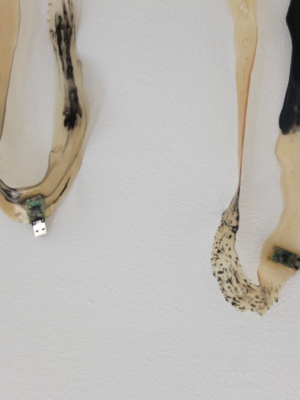
In the disclaimer you asked the users not to ‘disseminate, distribute or copy the material(s) you find on this USB’. We are interested in the tension between the trust you put into the users and the direct function of the USB as such, a product of pure function and little value.
Asking the buyer to treat the digital contributions respectfully is, of course, no more than a symbolic gesture.
A couple of artist had requested to have their content locked onto their USB. I, on the other hand, was quite keen on the idea of the contributions mixing with whatever a potential buyer would use the stick for – holiday pictures, files for work, maybe nothing – to keep the contents fluid and open for dissemination, maybe even an accidental or deliberate deletion. Each USB contains 1 GB additional space for other files to coexist and remix with the respective contribution.
Interestingly, it seems impossible to lock content onto a USB (apart from protecting the whole stick with a password), so I thought a disclaimer would be the least I could do. And, of course, since the pieces are sold through RongWrong, to people that feel connected to the space, a little call to friendship and trust seemed reasonable.
How was the work presented?
For the launch of the edition at RongWrong in January, all pieces were placed in loose arrangements onto the walls of the space. We installed a computer workstation inside the exhibition space, in order to activate the ‘immaterial group show’. The computer was connected to a projector that threw the image off the desktop into the window of the space, which is situated on the ground floor in a small street just off the Red Light district in the inner city.
Visitors were invited to take pieces from the wall, and explore them on the computer. The person scrolling through the content of a given USB became a VJ and ‘curator’ of the immaterial group show, which worked really nicely.
For the exhibition in Oslo, I was curious to address the tension between the edition as autonomous objects and the agency of the immaterial contributions. In one room, a selection of 9 pieces was installed in a grid-like formation. A computer station was set up in a second room, equipped with a 5m USB extension cord. This time, the pieces remained in their installed set-up, yet visitors could plug in the pieces with the extension cord. The respective content could only be explored in the absence of the physical objects.
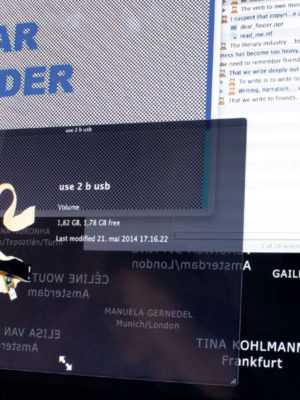
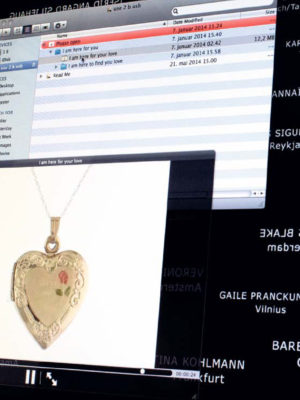
Were you trying to make a coherent collection, similar, to, let’s say a fashion collection?
When Arnisa Zeqo and Antonia Carrara, who run RongWrong together, invited me to make the first of a series of editions for their space, I quickly became interested in working with the concept of a ‘limited edition’. In an art context, a limited edition is understood to be a series of identical art objects, mostly commissioned by an art space (museum, gallery) and made specifically to be sold by the institution.
RongWrong is non-for-profit and run by and with the help of friends. Making an edition for that context, to me, implied unhinging the notion of exclusivity around the image of a limited edition and stretching that image, its expectations, potential and capacity into more directions. The idea of a series or a collection seems to naturally confront the ‘art’ notion of the original piece vs. the edition. use 2 b usb is a collection of 40 handmade objects, made from natural latex rubber, black and green ink and ‘naked’ USB circuit boards. It is comparable to a fashion collection in a sense that the basic cut (say of a shirt) is predefined, together with a vocabulary of colours and patterns, yet each shirt is made with a slightly different patterned or dyed fabric. I think of this as ‘pseudo-seriality’– where the attempt to produce ‘same objects’ with a set framework of dimensions and ingredients is paired with a rather uncontrollable technique that produces irreproducible surprises.
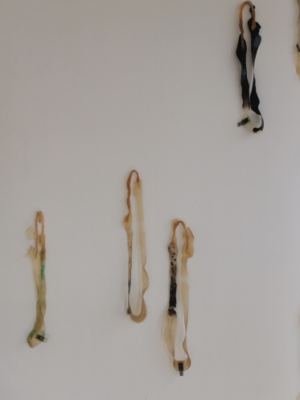
Why was it important for the work to be wearable/body related?
The idea to make wearable USB objects actually comes from my fascination with promotional USB accessories, like the USB wristband or USB keychain. There’s something excitingly uncomfortable about forced marriages like these, when unrelated functions or purposes are merged into one strange combination, in this case data and wearability. The image of carrying data around your neck for practical reasons – to a copy shop, school or work – also seems nicely out-dated.
I’m actually quite fascinated by the idea that it only needs a loop of something, literally fitting over your head, in order to proclaim that a work is ‘also’ wearable, and therefore qualifies as jewellery. I like the idea that one work can be taken, valued or interpreted as different things. The fact that use 2 b usb can be looked at as a series of necklaces, adds another possible/potential function to the edition. I find the aspect of wearability to be quite exciting in that respect.
From the jewellery perspective: It seems like you use the USB stick as a ‘centrepiece’, referring to a largest gem in the centre of classical diamond necklace, for example… it is interesting that the most precious thing here becomes intangible, invisible, as it is not, I assume, the actual USB stick, but the artwork it contains.
The USB stick is definitely the ‘central gem’ in the piece, a digital gemstone if you like. Instead of carrying the value in its quality and/or craftsmanship, the ‘gem-ness’ of the USB circuit board as such would be the mere promise of content, of a digital artwork. The naked green circuit boards sit in transparent skins of strange consistency, and there is a promise of digital data, of an immaterial plane imprinted on the surface of the USBs…
